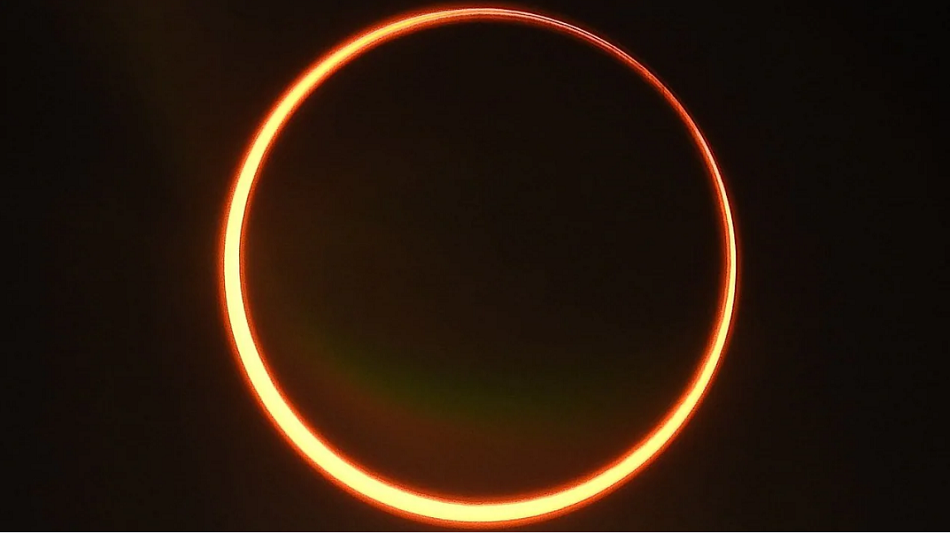On June 21st, Sunday, we can witness a peculiar astronomical phenomenon, an Annular Solar Eclipse. It will start at 9:15 am IST and end by 3:04 pm IST. Much of Asia, Africa, the Indian Ocean, the Pacific Ocean and parts of Europe and Australia will be able to watch it.
The total solar eclipse happens due to a remarkable cosmic coincidence. The Sun’s distance from Earth is about 400 times the Moon’s distance, and the Sun’s diameter is about 400 times the Moon’s diameter. So, the Sun and the Moon as seen from Earth, appear to be approximately the same size. This is why when the Moon passes in between the Earth and Sun, it can block the Sun entirely and we can see a total solar eclipse. The total solar eclipses are rare phenomena. Moon takes about 29 days to revolve around Earth, and its orbit is inclined to the ecliptic (Earth’s orbital plane) by about five degrees. Most of the time as the Moon passes in between the Earth and Sun; it is either slightly above or below relative to the Sun.
An annular eclipse is effectively similar to a total eclipse, except that it occurs during a point in the Moon’s orbit when it is farther away from the Earth than average. Then the Moon is too small to cover up the Sun, and leaves the outer rim of the Sun visible, to create the appearance of a ring, and what we see is popularly known as an annular ‘ring of fire’!
Interestingly, the Moon is spiralling away from Earth and the farther it gets, the smaller it appears in the sky. Eventually, the Moon’s apparent size will ultimately be insufficient to block out the Sun. We are particularly lucky to live in a special time which allows us to see the total solar eclipse. Approximately (ONLY!) 600 million years from now, the very last total solar eclipse will occur on Earth, after that, you will not be able to see a total solar eclipse unless you go to space.

**Image Source: Getty Images
In the contemporary history of science, solar eclipse plays an important role. One of the most important predictions of Albert Einstein’s theory of general relativity was the bending of starlight by the gravitational influence of the Sun. This prediction was tested during a total solar eclipse seen from the west coast of Africa on May 29th, 1919, by a team led by the famous astronomer Sir Arthur Eddington. The observational data vindicated the theory of relativity and led to a revolution in science.
On June 21st, Sunday, in Ahmedabad, we will not be able to see the ring of fire, but instead, watch a large part of the Sun being covered up by the Moon. The eclipse will start at approximately 10 am and end at around 1:30 pm. The maximum of the eclipse will be at around 11:42 am.
There are a lot of myths and misconceptions related to eclipses in our society, e.g. you can not eat or consume anything during the eclipse, pregnant women should not watch the eclipse because it can harm the baby, and so on, which are not true. There is no scientific rationale behind these beliefs. One can enjoy the eclipses with proper eye protection or go about their daily activities without any fear. If you are planning to observe the eclipse, please do not try to see the Sun without proper eye protection. Looking at the Sun with naked eyes can lead to a severe eye injury. You may buy appropriate solar eclipse glasses. Welder’s glass, No: 14 or darker, is also a safe choice.
Last but not least, due to the COVID 19 situation, while watching the eclipse, always wear the face mask and maintain adequate social distance.
This article is authored by Prof Sudipta Sarkar, Faculty in the discipline of Physics, IIT Gandhinagar.

